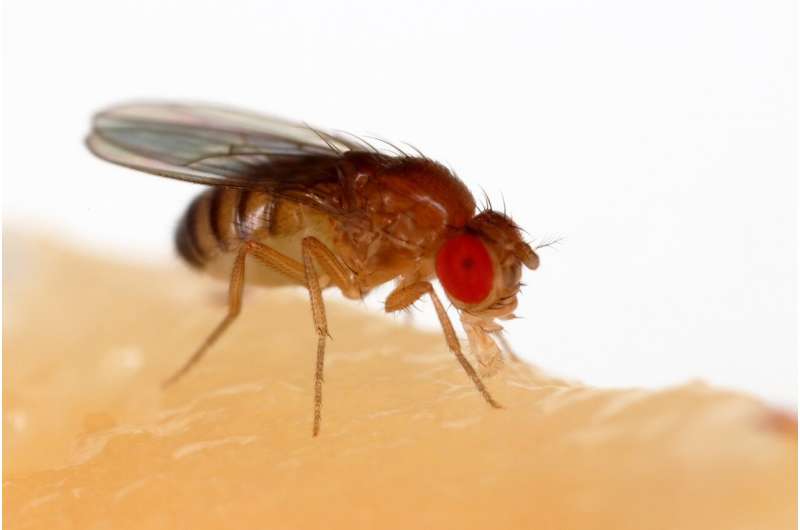May 5, 2023 report
This article has been reviewed according to Science X's editorial process and policies. Editors have highlighted the following attributes while ensuring the content's credibility:
fact-checked
peer-reviewed publication
trusted source
proofread
Fruit fly gut research leads to discovery of new phosphate-storing organelle

Scientists at the Department of Genetics, Blavatnik Institute at Harvard Medical School have discovered something remarkable while studying phosphate transport in fruit fly intestines—a never before seen organelle. Their results are published in the journal Nature, and a News and Views piece in the same journal discusses their findings.
Organelles are the structures performing specific functions within the cell and form the basis for most introductory biology courses. Major organelles include the nucleus, where DNA is kept and translated into RNA; the endoplasmic reticulum, where RNA is translated into proteins; and the Golgi apparatus, where enzymatic processing of proteins takes place; and the mitochondrion, which powers the cell and is involved in monitoring and regulating the cell as well as some intercellular communication.
A few dozen other minor organelles exist within animal cells, and it might have been assumed that every organelle had been discovered after so many years of research. But not so, as detailed in the researchers' new paper, "A phosphate-sensing organelle regulates phosphate and tissue homeostasis."
The research team was busy with an experiment demonstrating that inorganic phosphate starvation induces hyperproliferation and enterocyte differentiation in the digestive epithelium of the Drosophila (fruit fly) midgut. The team speculates that because inorganic phosphate is essential to cellular life, this might be a survival mechanism to produce more enterocytes capable of phosphate absorption.
They also observed that while in the state of phosphate depletion, the expression of gene PXo (CG10483) was also lower. Interested in the role of the PXo protein, the researchers devised a few interrogation experiments. By inhibiting PXo expression or deleting the gene entirely, they observed the same effect as when inducing inorganic phosphate starvation, suggesting that PXo plays a key role in phosphate transport. If the study stopped here, we would have an excellent addition to our knowledge of phosphate metabolism and cellular signaling, but there was more.
Immunostaining and ultrastructural analyses showed that PXo specifically appeared in a previously unknown multilamellar membrane—a newly discovered organelle the researchers named PXo bodies. The PXo was essentially storing phosphate in the PXo bodies. When PXo was downregulated or missing, the PXo bodies degraded, releasing the backup storage of phosphate into the cell.
As with the conclusion of any good research, more research is needed. Future investigations will be required to map this new organelle's full functions and interactions and could search for PXo bodies in other life forms.
More information: Chiwei Xu et al, A phosphate-sensing organelle regulates phosphate and tissue homeostasis, Nature (2023). DOI: 10.1038/s41586-023-06039-y
Emily Strachan et al, Phosphate-storing organelle discovered in fruit flies, Nature (2023). DOI: 10.1038/d41586-023-01410-5
Journal information: Nature
© 2023 Science X Network




















